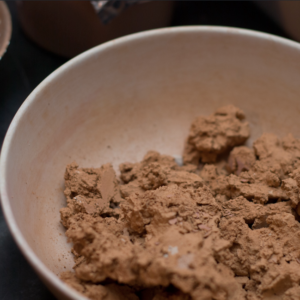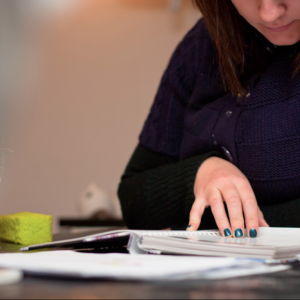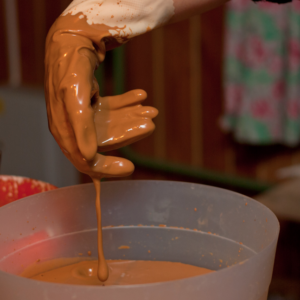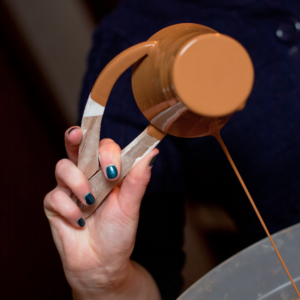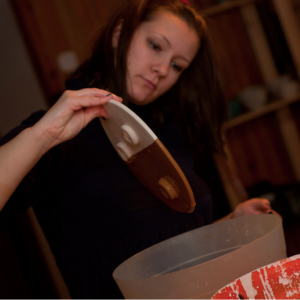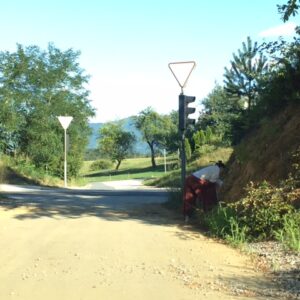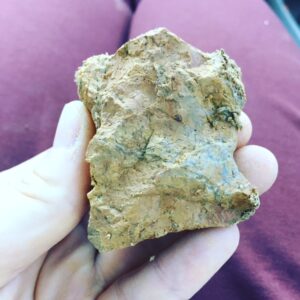Clays of Slovenia
I feel there is a movement of finding your local clay, and I believe I contribute to the movement too. It all started few years ago, when I was still a student and I got an opportunity to work as a surveyor in Komunala Novo mesto. I was working in the field with another surveyor. We were measuring all kinds of lines, and one time we came across a ditch on a road to Stopiče. I was in a ditch holding the TPS, focusing on signals and points and there it was, a line of red clay running inside the ditch. I touched it – it was sticky and willing to bend around. I was excited. At the time I was in my early years of making ceramics. I kindly asked a worker who was working the ditches to get me a shovel. But instead he dug some clay for me by himself. I took it home, clean it and made glaze and clay body from it:
Here I am six years later, still digging around for clays. I now even try to find other materials which I could use in my ceramics. And I do, more and more.
Having materials from your direct surroundings is the goal many potters strive for. Why? Well for one you can create works with materials which combination is very unique. Because no place on Earth has two locations which would give exactly the same materials. And we all want to be unique. Second – using local material opens a whole new world of possibilities for you. It can be a lifetime of research and test, looking for the best properties of clay body or best shade of colour of glazes. That is right – you can make the whole finished piece using only local goods – from clay to glaze and even firing! Even local wood in firing affects the outcome of a piece. Third – it is environmentally friendly. You are capable of using only small quantities from nature and making the process of preparing and cleaning and transport with minimal damage to where it has been taken from. I heard that French porcelain mines kaolin in New Zealand and Australia and it can be sold again there as porcelain. That is double fuel for transport ships for 2 literary most distanced places in the world. Can French porcelain be called French if it is made of Australian kaolin? Fourth: it connects you with places. The moment you spend more then few minutes in nature picking the material, you bond with the place. Even so, you bond with tradition, since in the past potters could only use clay immediate to their place of work. Fifth, it is just too much fun. Imagine you are a mushroom picker, or a crystal hunter, a wild herb or fruit collector. Once you are in it, you walk around the world and everywhere you see potential materials which you could use. And remember there are no 2 materials absolutely alike!
Did you find some clay around your home? You want me to make you a pot from it? Then bring me some clay and we will do it!
